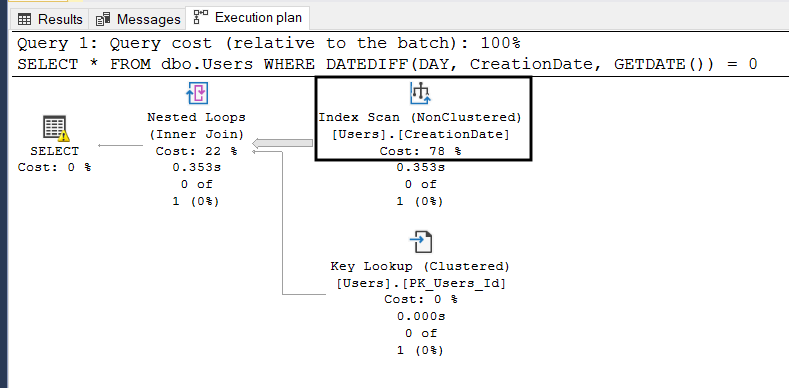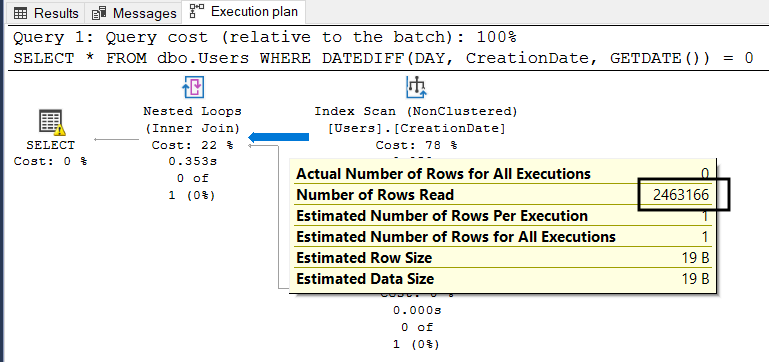TIL: How to compare DateTime without the time part in SQL Server
05 Oct 2020 #todayilearned #sqlIf you use DATEDIFF() or CAST() to filter a table by a DATETIME column using only the date part, there’s a better way. Let’s find it out.
To compare dates without the time part, don’t use the DATEDIFF() or any other function on both sides of the comparison in a WHERE clause. Instead, put CAST() on the parameter and compare using >= and < operators.
Let’s use a local copy of the StackOverflow database to find all user profiles created on a particular date.
Inside StackOverflow database, there’s dbo.Users table with a CreationDate column. Let’s use that column to find all users who created their profiles today.
Before we get started, let’s create an index on CreationDate to make things faster.
CREATE INDEX CreationDate ON dbo.Users(CreationDate);
Probably, we would write a query like this one,
SELECT * FROM dbo.Users
WHERE DATEDIFF(DAY, CreationDate, GETDATE()) = 0;
But, SQL Server has to scan the entire index. Notice the “Index Scan” operator in the execution plan. SQL Server doesn’t have any statistics on CreationDate wrapped in a DATEDIFF() function.

An Index Scan by itself in an execution plan isn’t good or bad. It depends on the number of rows read.
In this case, SQL Server read all the records on the dbo.Users table. When we hover over the row next to the “Index Scan” operator, we notice the number of rows read. It scanned the whole index, more than 2 millions of records.

Let’s stop using DATEDIFF() or CAST() to filter a table on a DATETIME column.
To filter a table on a DATETIME column comparing only the date part, use CAST() only around the parameter, and >= and < with the desired date and the day after.
SELECT * FROM dbo.Users
WHERE CreationDate >= CAST(GETDATE() AS DATE)
AND CreationDate < DATEADD(day, 1, CAST(GETDATE() AS DATE));
Voilà! That’s how to compare dates on the WHERE clauses. Don’t use DATEDIFF() or CAST() on both sides of the comparison. In general, don’t put functions around columns in the WHERE clause.
For more content about SQL Server, check the difference between EXISTS SELECT 1 and EXISTS SELECT *, T-SQL doesn’t have constants and variables aren’t a good idea, and how LIKE handle NULL values.